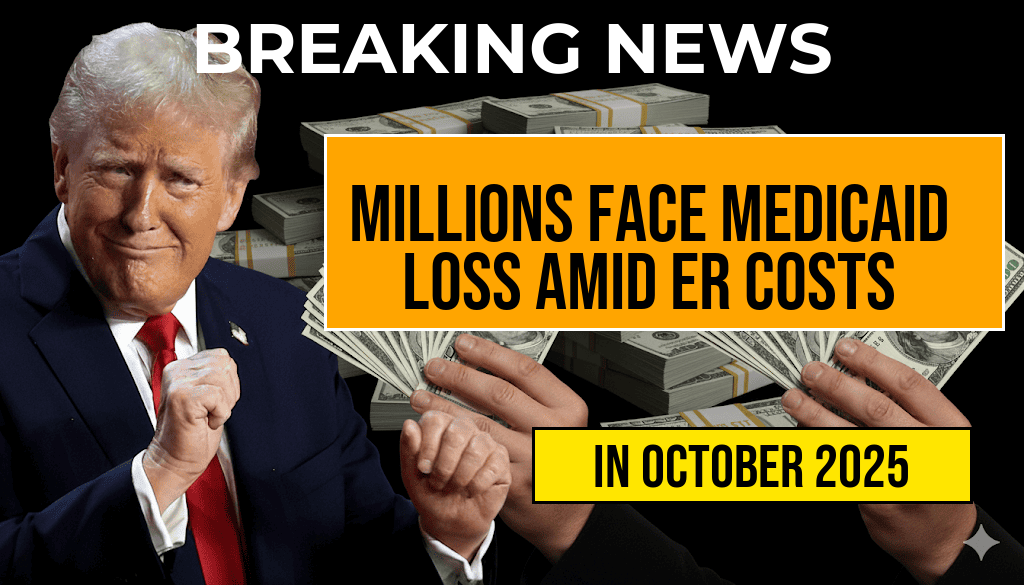As the U.S. grapples with healthcare affordability, a recent report from the Congressional Budget Office (CBO) reveals a troubling trend: millions of Americans may be at risk of losing their Medicaid coverage due to rising healthcare costs, particularly emergency room bills. The CBO’s analysis highlights that a significant portion of low-income individuals could face financial strain from unexpected medical expenses, with a $1,000 emergency room bill serving as a pivotal example. This situation raises urgent questions about the sustainability of Medicaid programs and the overall impact on vulnerable populations who rely on this essential safety net for their healthcare needs.
The Medicaid Landscape
Medicaid, a joint federal and state program, provides health coverage to millions of low-income Americans. It has been instrumental in improving access to healthcare, especially for marginalized groups. However, the CBO’s findings suggest that the landscape may be shifting. As costs rise and states adjust their eligibility criteria, many could find themselves without crucial healthcare support.
Emergency Room Costs on the Rise
Emergency room visits can be financially crippling. The CBO report indicates that even a modest $1,000 bill can lead to significant financial hardship for those with limited income. For many Medicaid beneficiaries, this could mean choosing between paying for necessary medical care and other basic needs, such as housing or food.
- A $1,000 bill can equate to a month’s rent for many low-income families.
- Emergency room visits often result in unexpected costs, leading to debt accumulation.
- Many Americans are unaware of the potential financial repercussions before seeking emergency care.
The CBO’s Warnings
The CBO’s report outlines the potential fallout from rising healthcare costs. With many states expected to tighten Medicaid eligibility requirements, an increase in emergency room bills could serve as a catalyst for disenrollment. The report emphasizes that the most vulnerable populations, including children, the elderly, and individuals with disabilities, could be disproportionately affected.
Who Will Be Impacted?
According to the CBO, the following groups may face the highest risks:
- Low-Income Families: Families living paycheck to paycheck may struggle to cover unexpected medical expenses.
- Children: Many children depend on Medicaid for routine and emergency care.
- The Elderly: Older adults often require more frequent medical attention, making them particularly vulnerable.
Potential Solutions
Addressing the challenges posed by rising emergency room costs and potential Medicaid disenrollment will require a multifaceted approach. Experts suggest several strategies that could help alleviate the burden on low-income families:
- Policy Reforms: Adjusting Medicaid eligibility criteria to better reflect the economic realities faced by low-income individuals.
- Financial Assistance Programs: Expanding programs that provide financial support for emergency medical expenses.
- Education and Awareness: Increasing awareness about emergency room costs and available resources to help manage medical bills.
Conclusion
The CBO’s warning about the potential loss of Medicaid coverage due to rising emergency room costs underscores a critical issue in the U.S. healthcare system. As millions of Americans face the prospect of financial hardship from unexpected medical bills, policymakers and healthcare advocates must prioritize solutions that protect the most vulnerable populations. Ensuring access to affordable healthcare is not just a matter of policy; it is a question of equity and social justice for all Americans.
For more information on Medicaid and its impact, visit Medicaid.gov or explore the CBO’s full report at CBO.gov.
Frequently Asked Questions
What is the main concern regarding Medicaid coverage?
The CBO warns that millions could be at risk of losing their Medicaid coverage due to the financial impact of unexpected medical bills, such as a $1,000 ER bill.
How does an emergency room bill affect Medicaid recipients?
An unexpected emergency room bill can lead to financial strain, making it difficult for some individuals to maintain their Medicaid eligibility, especially if they exceed income limits due to increased medical expenses.
Who is most at risk of losing Medicaid coverage?
The individuals most at risk are those who are already on the brink of financial instability, such as low-income families or individuals with chronic health conditions who rely heavily on Medicaid for their healthcare needs.
What can Medicaid recipients do to protect their coverage?
To protect their Medicaid coverage, recipients should stay informed about their eligibility requirements, manage medical expenses, and seek assistance when faced with unexpected costs like a $1,000 ER bill.
What role does the CBO play in this situation?
The CBO (Congressional Budget Office) provides analysis and projections about the potential impact of healthcare costs on government programs, highlighting the risks associated with rising medical bills for Medicaid recipients.






